This article dives into ten effective examples of the Premack Principle that parents can use to encourage positive behaviors in their kids. By pairing tasks that aren’t so enjoyable with fun activities—like finishing homework before jumping into a game—caregivers can boost motivation and compliance. This approach not only fosters responsibility but also enhances engagement in children’s daily routines.
Let’s explore this together! By understanding how to implement these strategies, you can make a real difference in your child’s behavior. Imagine the satisfaction of seeing them take on responsibilities with a smile! We’re here to help you every step of the way, so let’s get started on this journey toward nurturing positive habits in your little ones.
The Premack Principle, often affectionately called 'Grandma's Rule,' provides a delightful insight into behavior modification. It suggests that engaging in more enjoyable activities can motivate individuals to tackle those less appealing tasks. For parents, this principle opens up a wonderful opportunity to boost compliance and engagement in their children’s daily routines.
But how can caregivers effectively implement this strategy without dampening intrinsic motivation or overwhelming their kids? Let’s explore this together! This article dives into ten practical examples of the Premack Principle in action, equipping parents with the tools they need to foster responsibility and positive behavior in their children. We’re here to help you every step of the way!
The Premack Principle example, often referred to as 'Grandma's Rule,' highlights an interesting idea: more enjoyable behaviors can motivate us to tackle less enjoyable ones. In the context of Rori Care's ABA therapy, the premack principle example serves as a key strategy for helping young individuals take on tasks they might not be thrilled about, by pairing them with fun activities. For example, imagine a young person who feels inspired to finish their homework because they know they can play their favorite game afterward. This approach not only promotes compliance but also boosts engagement in the therapeutic process, making it a powerful tool for behavior modification.
Research shows that personalized reward systems, like those based on the Premack theory, can lead to impressive improvements in skill development and behavior. By tailoring these strategies to fit each child's unique likes and needs, caregivers can enhance the effectiveness of their interventions. Plus, studies reveal that active involvement from caregivers during therapy is crucial for helping kids apply their skills in everyday life. This underscores the importance of collaboration between therapists and families.
Rori Care's behavior care engine plays a vital role in this journey, updating behavior intervention and skill acquisition plans based on progress after each session. This adaptable approach ensures that treatment plans stay relevant and effective. In practice, the premack principle example can be utilized in various settings, from home to school, by linking enjoyable activities—like playing a game—to the completion of less appealing tasks. This not only encourages positive behavior but also helps young individuals develop self-regulation skills, supporting their overall growth and independence. A case study shows that when caregivers actively participate, it significantly enhances outcomes, highlighting the importance of teamwork between therapists and families. By equipping caregivers with ABA principles and strategies, Rori Care empowers them to provide consistent support, leading to better behavioral outcomes and a more harmonious family dynamic. Let’s explore this together!
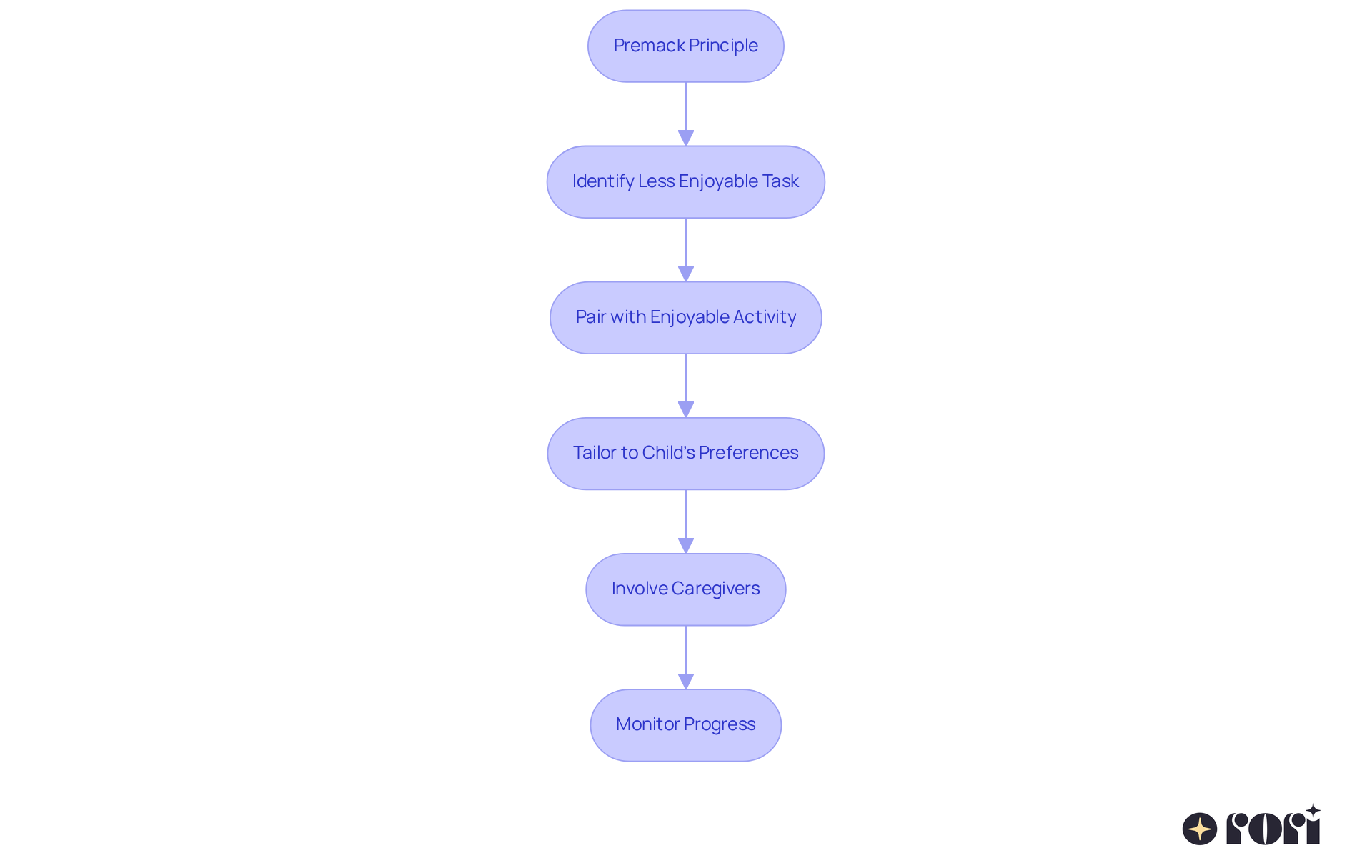
A classic example of the premack principle is getting kids to eat their vegetables before they can enjoy dessert. This approach not only helps children embrace healthier eating habits but also highlights the importance of nutrition in their daily lives. By setting this order, parents can teach their kids about making choices and understanding the consequences, nurturing a sense of responsibility for their food preferences.
Studies show that using rewards effectively can significantly boost the intake of fruits and vegetables among children. For instance, a field experiment found that incentives increased the percentage of kids eating a serving of fruits or vegetables at lunch from just 39% to a whopping 80%! Nutritionists point out that these strategies can lead to lasting changes in young people's eating habits, ultimately impacting their overall health and well-being.
As David R. Just wisely noted, "Encouraging young people to see vegetables as vital elements of their meals can change their connection with food, making nutritious options more attractive." Plus, implementing these incentives has led to a 33% drop in food waste, further showcasing the benefits of this strategy in promoting healthy eating. So, let’s explore this together and see how we can make mealtime a positive experience for our little ones!
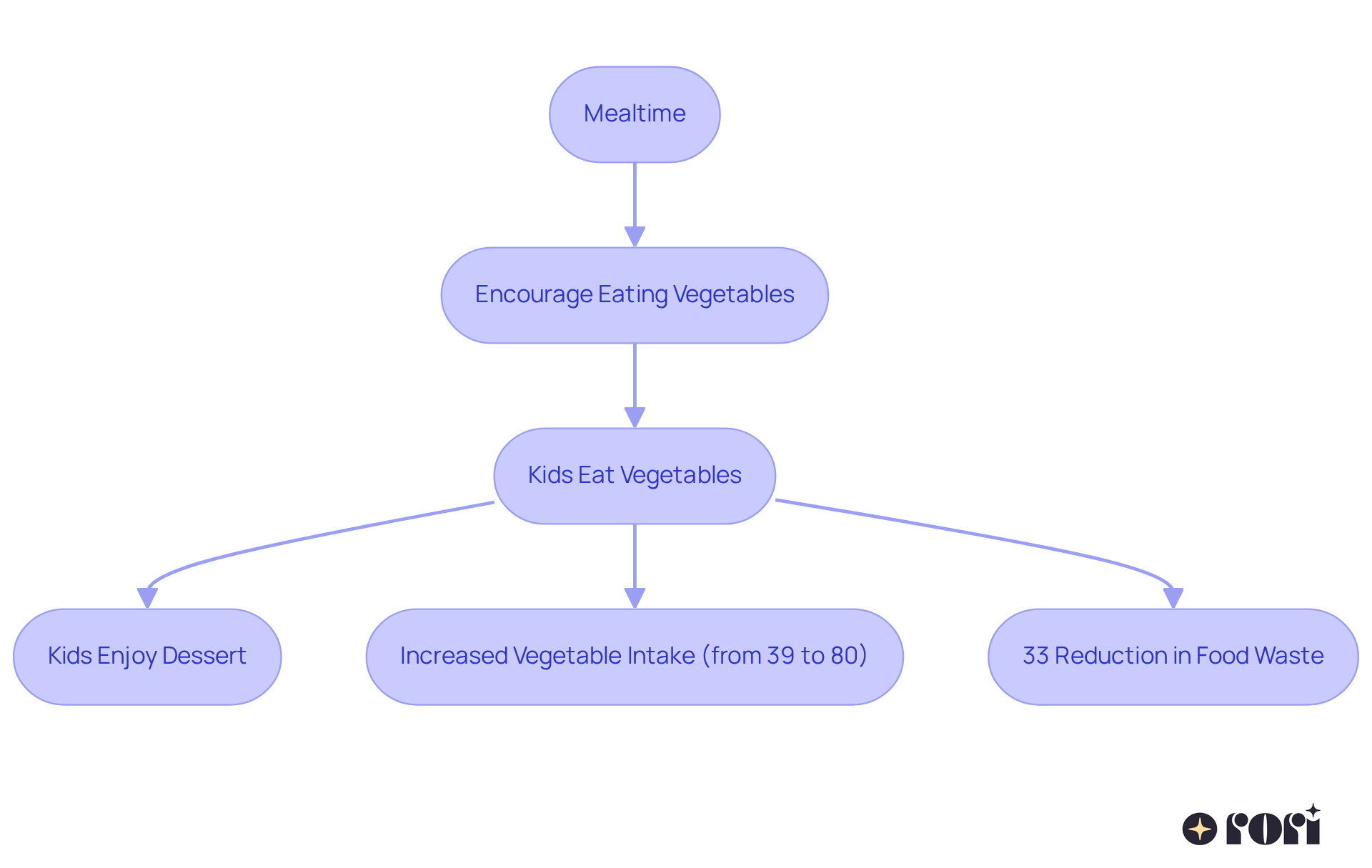
Have you ever thought about how chores can be a game changer for your kids? A successful way to implement the premack principle example is by encouraging youngsters to finish their chores before diving into screen time. This approach not only builds a sense of responsibility for household tasks but also serves as the premack principle example by teaching kids the importance of completing their duties before jumping into fun activities.
Research shows that kids who regularly engage in chores often excel academically and develop better problem-solving skills. For example, a study published in the Journal of Developmental & Behavioral Pediatrics found that children assigned chores in kindergarten showed improved social, academic, and life satisfaction skills by third grade. By establishing this routine, parents can create a structured environment that nurtures accountability and time management skills.
Youth psychologists highlight that chores are a simple yet effective way to boost young people's executive functioning skills. Gary Drevitch notes, "The evidence is fairly clear: Chores are good for kids," which reinforces the idea that completing responsibilities can lead to delightful rewards, like screen time! This approach encourages kids to take charge of their tasks and truly value the importance of hard work. Let’s explore this together and see how chores can make a positive impact on your family!
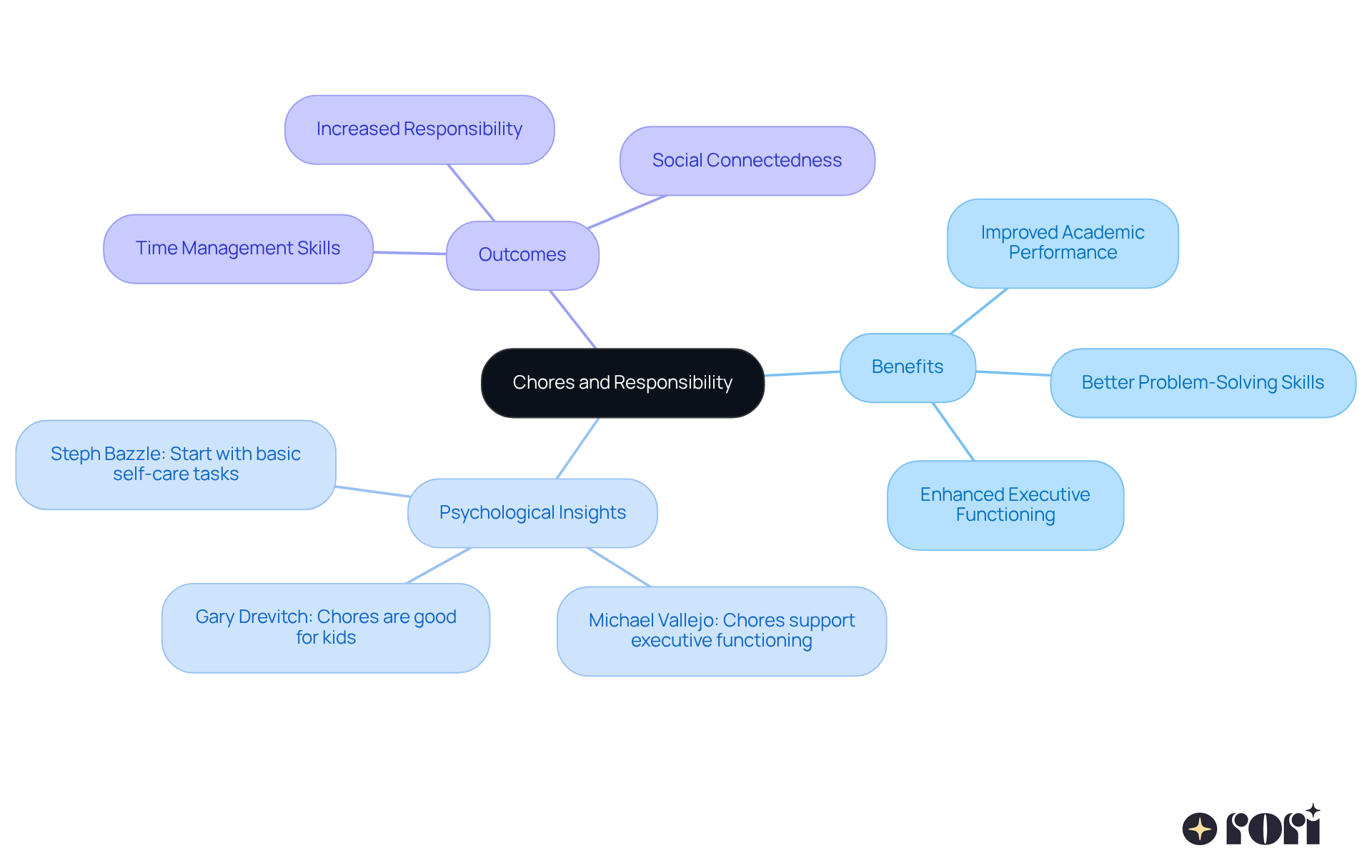
Connecting exercise with fun activities is a fantastic way to implement the Premack Principle, effectively motivating kids to be more physically active. By establishing a routine where children engage in physical exercise before participating in their favorite leisure activities, parents can illustrate the premack principle example, fostering a supportive environment that promotes healthier lifestyles. This approach not only boosts fitness levels but also teaches an important lesson about balancing responsibilities with enjoyment.
Did you know that only 21% of U.S. youths aged 6 to 17 get the recommended 60 minutes of physical activity each day? Consistent exercise is vital for kids' health, and the benefits go beyond just physical well-being. It can enhance cognitive function, lift moods, and improve social skills. For instance, 61% of children aged 6 to 12 report participating in a team sport at least once a year, which is linked to higher self-esteem and social engagement.
Fitness experts emphasize the importance of weaving exercise into daily routines. As Dr. Jordan Carlson puts it, "Human bodies were designed to move and be active, but modern society has made life more sedentary." This highlights the need for creative strategies to encourage movement among our youth. By imaginatively linking exercise with play, parents can help their children develop a lifelong love for physical fitness, ultimately boosting their overall well-being.
Let’s explore this together! By making exercise a fun part of your child's day, you’re not just helping them stay fit; you’re also nurturing their happiness and social skills. We’re here to help you every step of the way!
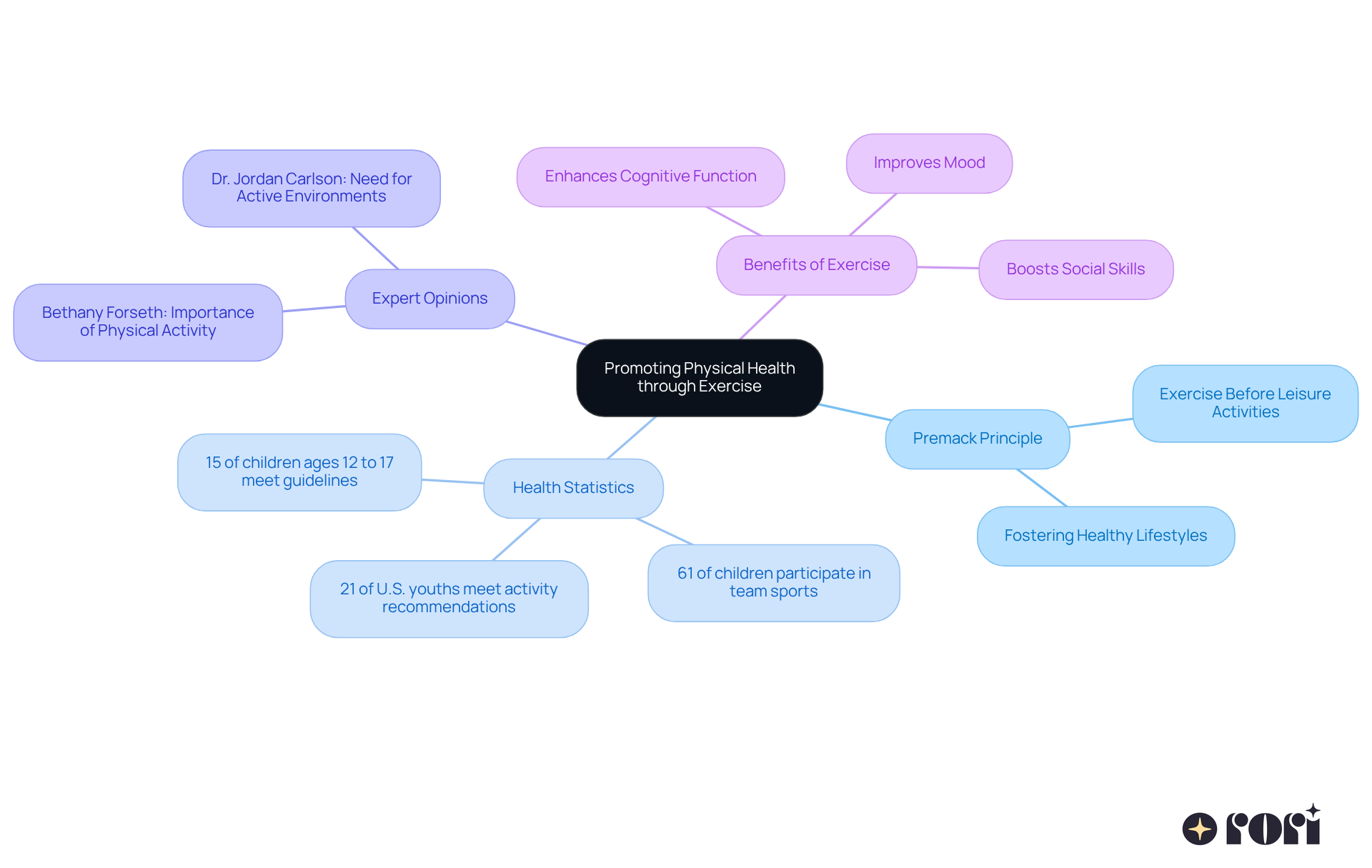
Implementing a First-Then visual board is a fantastic way to illustrate the premack principle example! This tool clearly shows the order of tasks, like finishing homework first, before diving into something fun, like playing outside. Research shows that visual aids can really help young learners understand what’s expected of them, which can ease those anxious moments during transitions.
This clarity not only supports kids in following through with requests but also helps them feel more in control as they learn to manage their responsibilities. Many educators have found that the premack principle example, like using First-Then boards in ABA therapy, leads to great results by effectively reinforcing desired behaviors. By incorporating these visual aids, parents can create structured environments that encourage positive behavior and enhance learning experiences for their little ones. Let’s explore this together!
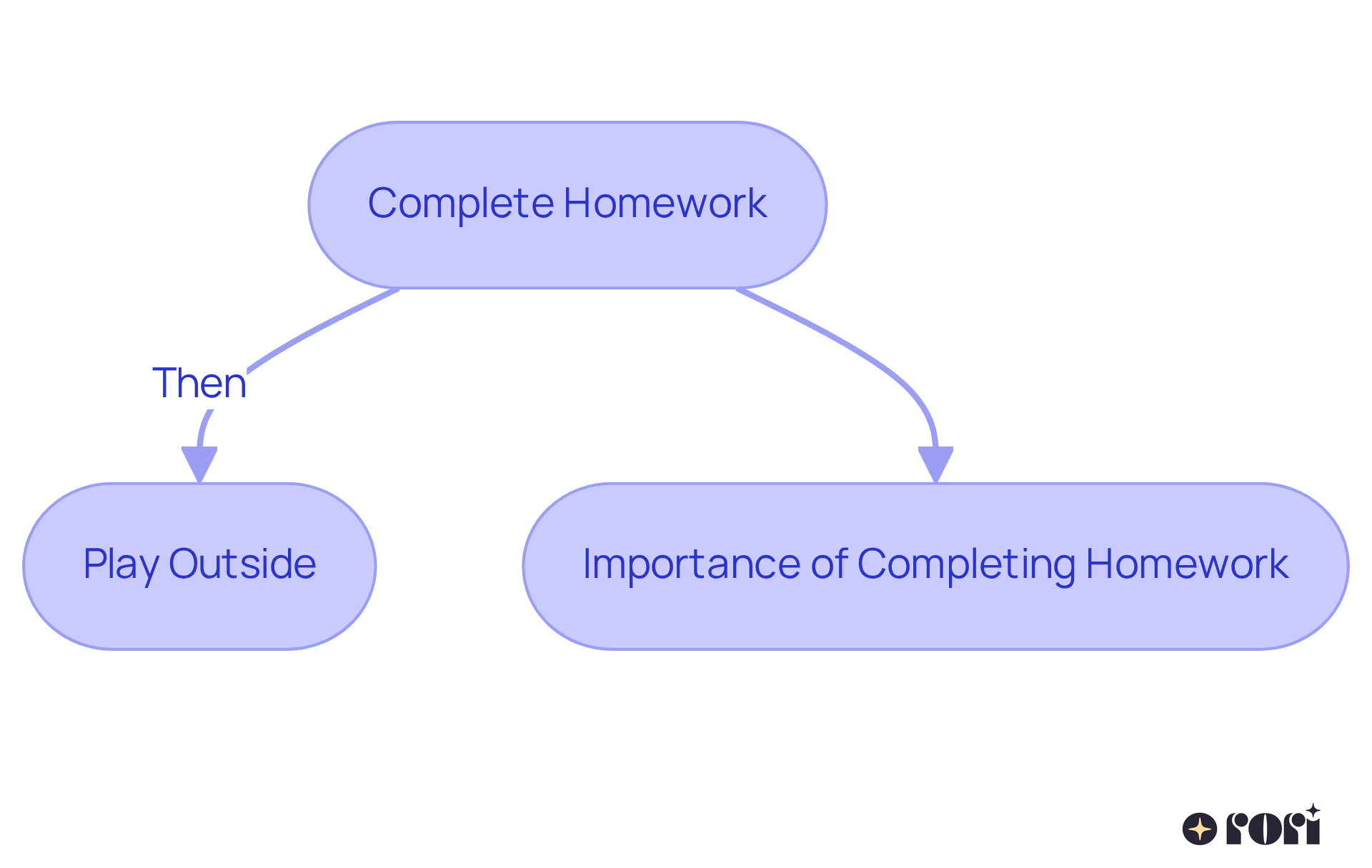
Using positive language when setting expectations can really boost motivation and adherence in young people. For instance, instead of saying, 'You have to clean your room before you can watch TV,' you can use the premack principle example: 'First, let’s clean your room, and then you can enjoy your favorite show!' This approach not only makes the request feel more inviting but also illustrates the premack principle example by strengthening the link between completing a task and enjoying a reward.
Research shows that positive communication strategies can lead to better compliance, as kids are more likely to respond positively when they see tasks as part of a rewarding experience. By framing requests in a positive light, parents can create a more collaborative atmosphere, encouraging kids to willingly take part in important tasks.
Let’s explore this together!
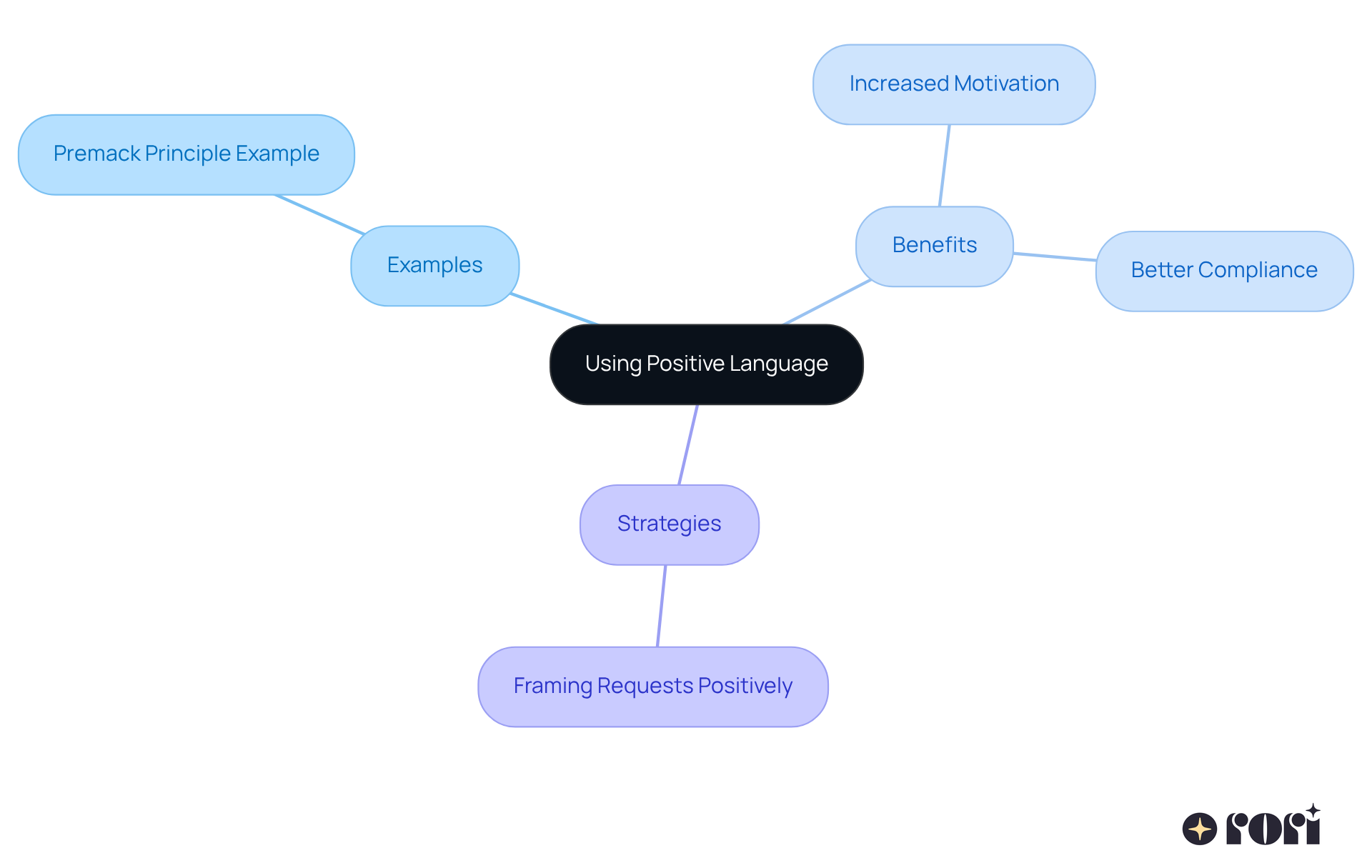
Applied Behavior Analysis (ABA) is a wonderful therapeutic method that uses principles of learning and behavior to help young people develop essential skills. One effective strategy is to combine activities that kids love with those they might not enjoy as much. For example, a parent could let their child play a favorite game for a little while after finishing their homework. This not only makes the less appealing task more fun but also reinforces the idea that effort brings rewards, boosting motivation and cooperation.
Research shows that kids who regularly help out with household chores often do better in school and develop stronger problem-solving skills. By using the premack principle example, parents can create a structured environment where completing necessary tasks opens the door to fun activities. This approach fosters a sense of accomplishment and encourages young people to take on responsibilities.
Moreover, when caregivers are equipped with ABA principles, they can better support their children’s behavioral goals through active involvement and careful tracking. This knowledge leads to informed decision-making and improved behavioral outcomes, making a significant difference in children’s overall development and promoting a more harmonious family dynamic. Let’s explore this together and see how we can make the most of these strategies for our kids!
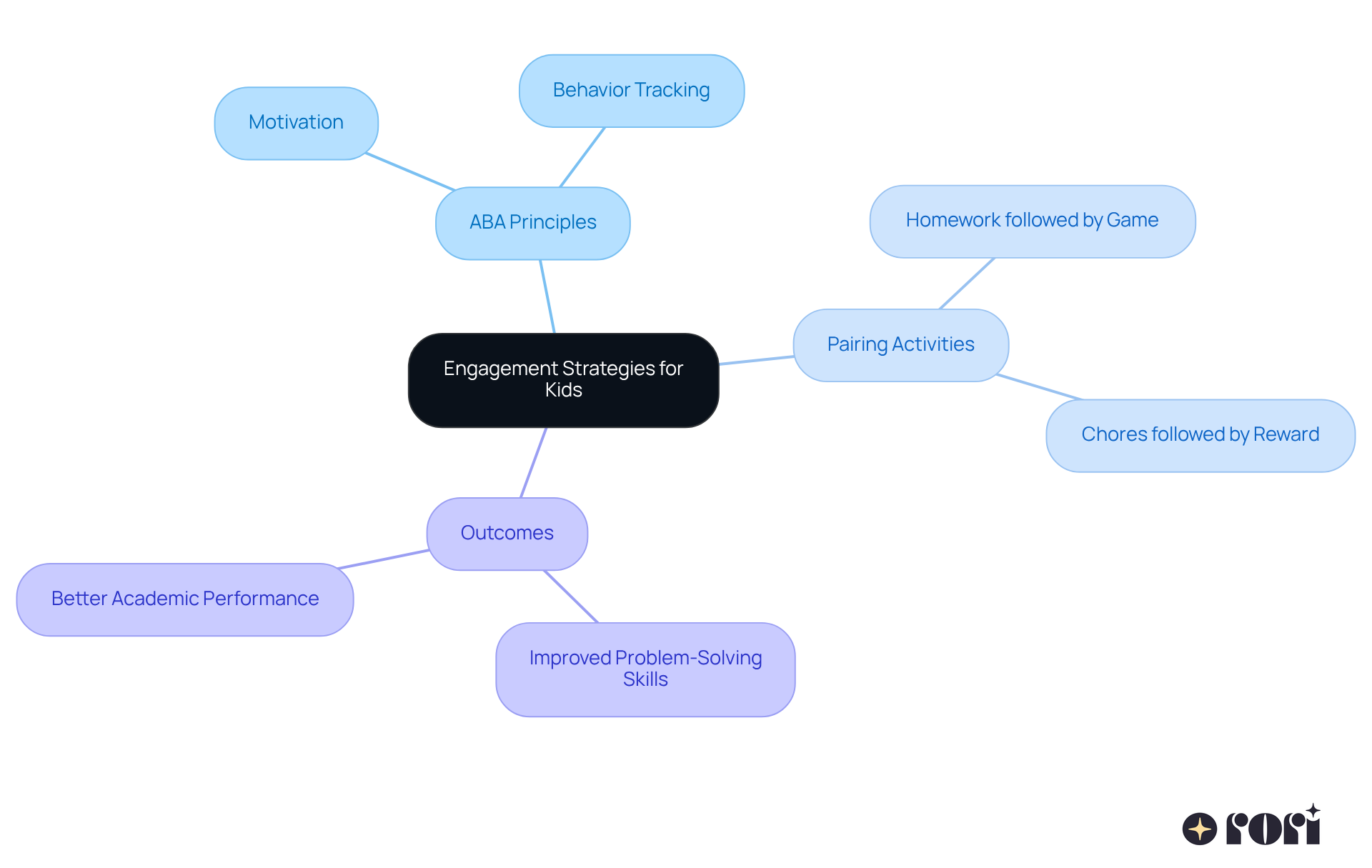
The Premack Principle is a fantastic tool in classroom settings! For example, teachers can demonstrate the Premack Principle by motivating students to complete their tasks by linking them to enjoyable activities, such as:
This approach not only encourages students to finish their work but also fosters a positive learning environment where hard work is acknowledged and celebrated. 🌟 Research shows that reward systems like this can really boost student motivation and engagement, leading to better academic results. By thoughtfully pairing less exciting tasks with fun activities, educators can create a vibrant culture of achievement and a love for learning. Let’s explore this together!
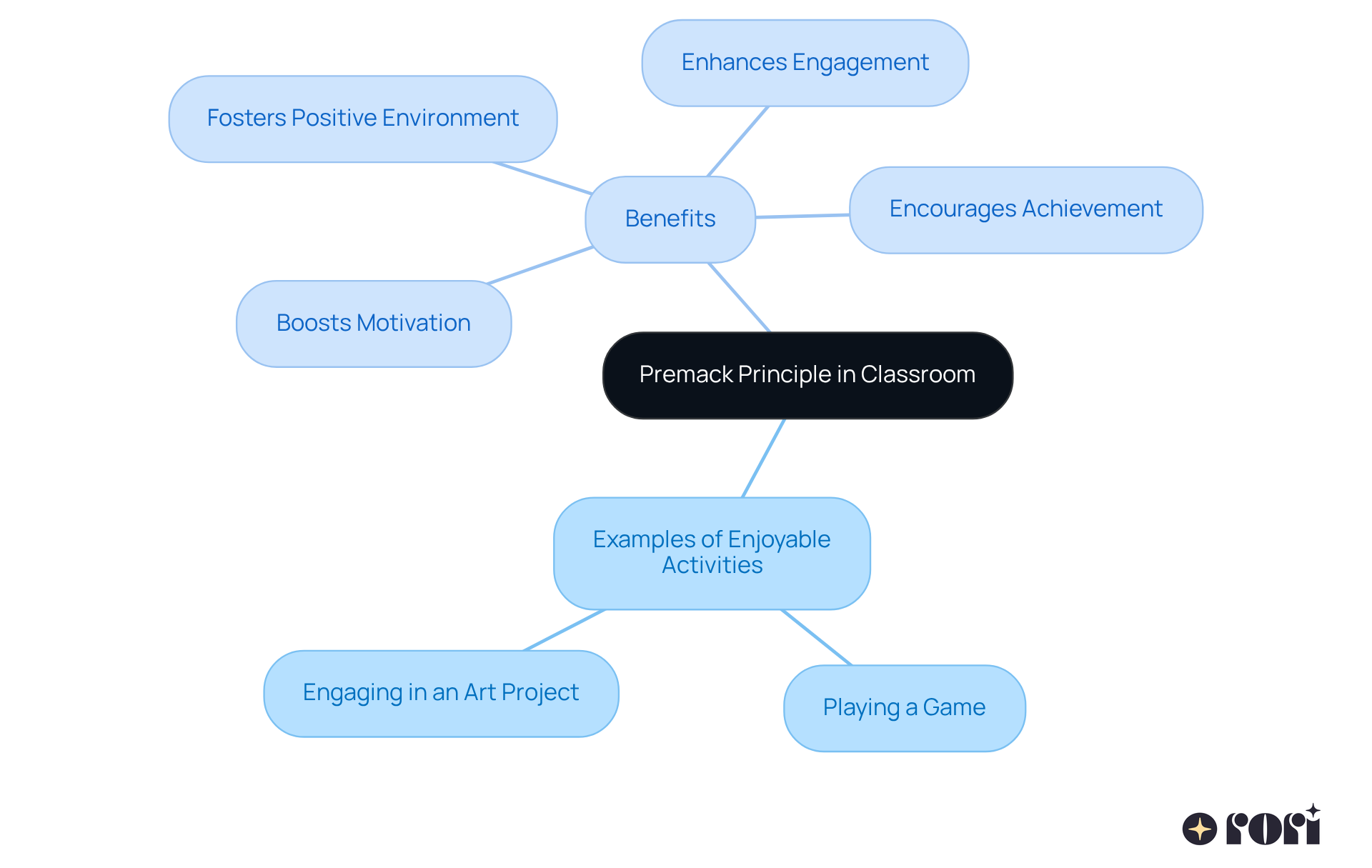
Empowering young individuals to manage their own behaviors through the premack principle example can really boost their independence! For example, a young person setting personal goals, like finishing a certain number of chores before diving into their favorite video game, is a clear illustration of the premack principle example. This approach not only encourages self-regulation but also builds a sense of accomplishment and responsibility.
Research shows that when youth set goals, it leads to better behavior management. Studies reveal that self-management strategies can effectively increase desirable behaviors while reducing the undesired ones. By allowing young individuals to take ownership of their goals, parents can nurture independence and resilience—qualities that are essential for tackling life's challenges.
As specialists point out, fostering self-sufficiency in young individuals is key for their growth. It empowers them to make choices and manage their actions, ultimately enhancing their quality of life. Let’s explore this together and see how we can support our kids on this journey!
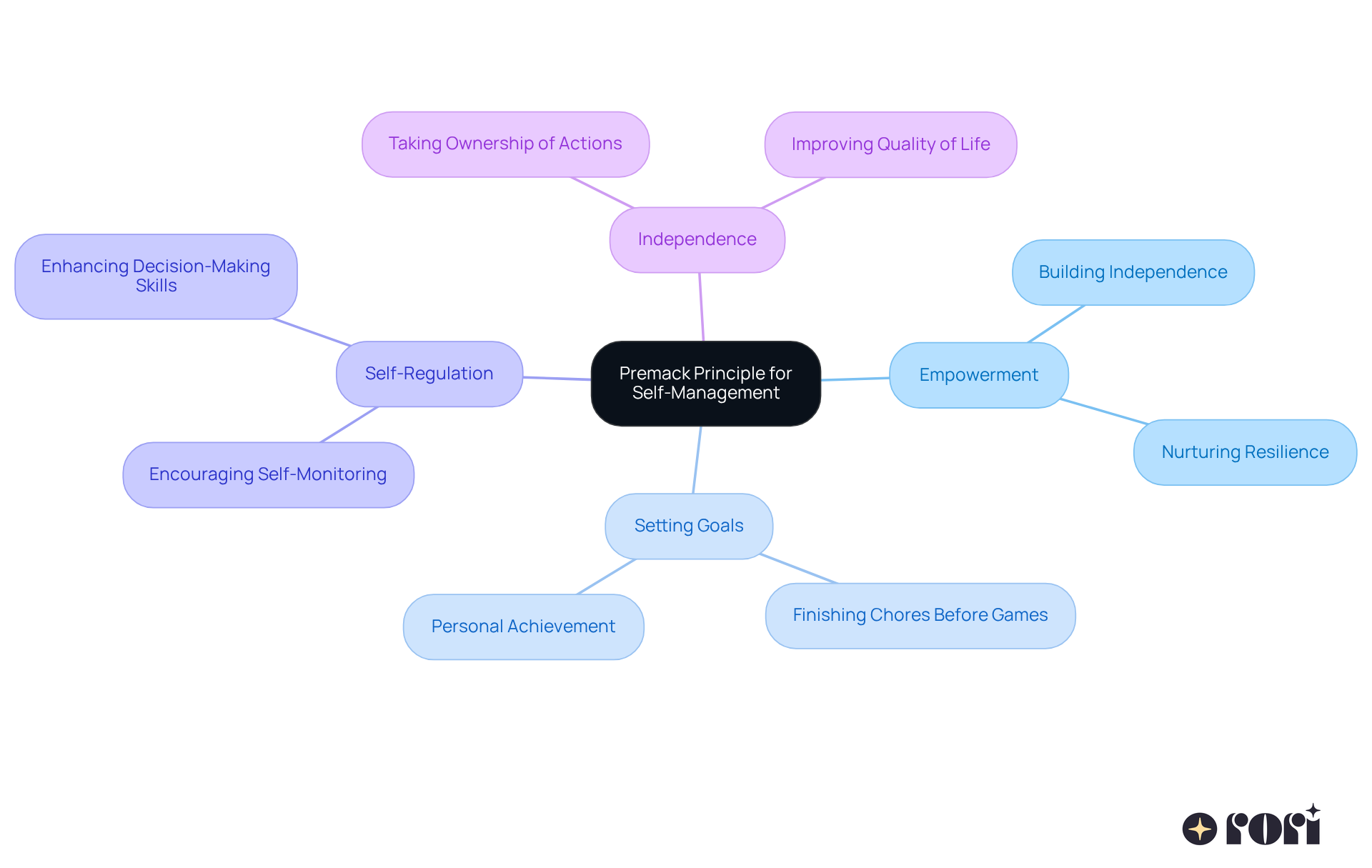
This concept is a valuable strategy for behavior modification, but it’s important to recognize its limitations. For example, if a young person finds the less preferred task overwhelming, the principle might not work as intended. Plus, relying too much on rewards can actually diminish intrinsic motivation over time, leading kids to depend on external validation. Research shows that students who are used to rewards may struggle with self-esteem and develop a fixed mindset about their abilities.
So, what can parents do? A balanced approach is key! Incorporating the premack principle example while also nurturing your child’s internal motivation and resilience can make a big difference. Creating encouraging environments that promote independence, choices, and skills helps young people engage in activities for their own sake, not just for the reward. By fostering a love for learning and genuine enjoyment in what they do, you can support your children’s growth both academically and personally.
And let’s not forget about caregiver education! It empowers you to provide the right support at home, leading to better behavioral outcomes and happier family dynamics. Let’s explore this together and see how we can make a positive impact on our kids' lives!

The Premack Principle is a game-changer for parents looking to boost their children's behavior and motivation! By connecting fun activities with less appealing tasks, caregivers can encourage compliance and nurture a sense of responsibility in their little ones. This approach not only helps modify behavior but also builds essential life skills—making it a must-have tool in your parenting toolkit.
Throughout this article, we've shared practical examples of how to weave the Premack Principle into daily life. For instance:
These examples showcase the principle's flexibility. Plus, the importance of being actively involved, using visual aids, and maintaining positive communication really highlights how effective this approach can be in creating a nurturing environment for children.
Ultimately, embracing the Premack Principle opens up a world of possibilities for parents. It’s not just about improving behavior; it’s about teaching valuable lessons around effort, reward, and self-management. By balancing intrinsic motivation with external rewards, you empower your children to thrive. Engaging with these strategies can spark lasting positive changes, making family life more harmonious and enriching the growth of your young ones. Let’s explore this together and see how you can make a difference!
What is the Premack Principle in the context of ABA therapy?
The Premack Principle, often referred to as 'Grandma's Rule,' suggests that more enjoyable behaviors can motivate individuals to engage in less enjoyable tasks. In Rori Care's ABA therapy, this principle is used to encourage young individuals to complete tasks they may not enjoy by pairing them with fun activities.
How does Rori Care utilize the Premack Principle?
Rori Care applies the Premack Principle by linking enjoyable activities, such as playing a favorite game, to the completion of less appealing tasks, like homework. This approach promotes compliance and increases engagement in the therapeutic process.
What are the benefits of personalized reward systems based on the Premack Principle?
Personalized reward systems can lead to significant improvements in skill development and behavior. By tailoring strategies to fit each child's unique preferences, caregivers can enhance the effectiveness of their interventions.
Why is caregiver involvement important in ABA therapy?
Active involvement from caregivers during therapy is crucial for helping children apply their skills in everyday life. This collaboration between therapists and families significantly enhances outcomes and supports the child's overall development.
How does Rori Care's behavior care engine function?
Rori Care's behavior care engine updates behavior intervention and skill acquisition plans based on the child's progress after each session, ensuring that treatment plans remain relevant and effective.
Can the Premack Principle be applied outside of therapy sessions?
Yes, the Premack Principle can be utilized in various settings, such as home and school, by linking enjoyable activities to the completion of less appealing tasks, which encourages positive behavior and self-regulation skills.
What is an example of the Premack Principle in promoting healthy eating habits?
A classic example is having children eat their vegetables before they can enjoy dessert. This strategy not only encourages healthier eating habits but also teaches kids about making choices and understanding consequences.
How effective are reward systems in promoting healthy eating among children?
Studies show that using rewards can significantly increase the intake of fruits and vegetables among children. For instance, one study found that incentives raised the percentage of kids eating a serving of fruits or vegetables at lunch from 39% to 80%.
What role do chores play in fostering responsibility among children?
Encouraging children to complete chores before engaging in fun activities, like screen time, helps build a sense of responsibility and teaches them the importance of completing duties before enjoying rewards.
What are the long-term benefits of assigning chores to children?
Research indicates that children who regularly engage in chores tend to excel academically and develop better problem-solving skills. Establishing a routine around chores nurtures accountability and time management skills.